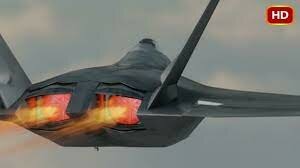X-39
To post or not to post, that is the question
- Joined
- 20 February 2021
- Messages
- 382
- Reaction score
- 913
Hi, i am relatively new, and I've been lurking around for quite some time but finally this is my first post 
It is widely known that stealth aircraft use serpentine intakes with the purpose of reducing IR signature, scatter radar waves and also preventing engine faces from creating additional reflections. But i wonder whether we might see the emergence of more intricate designs in future aircraft to further improve Low observability, like shown below, where we can clearly see the ADVENT and SR-72 concepts feature not only curved inlets, but the exhaust ducts are also shaped to prevent direct line of sight from the rear :


Also i found this image suggesting the B-2 Spirit may in fact use such system, but its just a rumour as far as i know, whereas the F-22 and YF-23 engine blades are fully visible:



Do you think we could see this some day in the future on aircraft like PCA and B-21, or the costs and complexity of shielding an aircraft's rear will outweight the benefits of this application?
It is widely known that stealth aircraft use serpentine intakes with the purpose of reducing IR signature, scatter radar waves and also preventing engine faces from creating additional reflections. But i wonder whether we might see the emergence of more intricate designs in future aircraft to further improve Low observability, like shown below, where we can clearly see the ADVENT and SR-72 concepts feature not only curved inlets, but the exhaust ducts are also shaped to prevent direct line of sight from the rear :

Also i found this image suggesting the B-2 Spirit may in fact use such system, but its just a rumour as far as i know, whereas the F-22 and YF-23 engine blades are fully visible:

Do you think we could see this some day in the future on aircraft like PCA and B-21, or the costs and complexity of shielding an aircraft's rear will outweight the benefits of this application?
